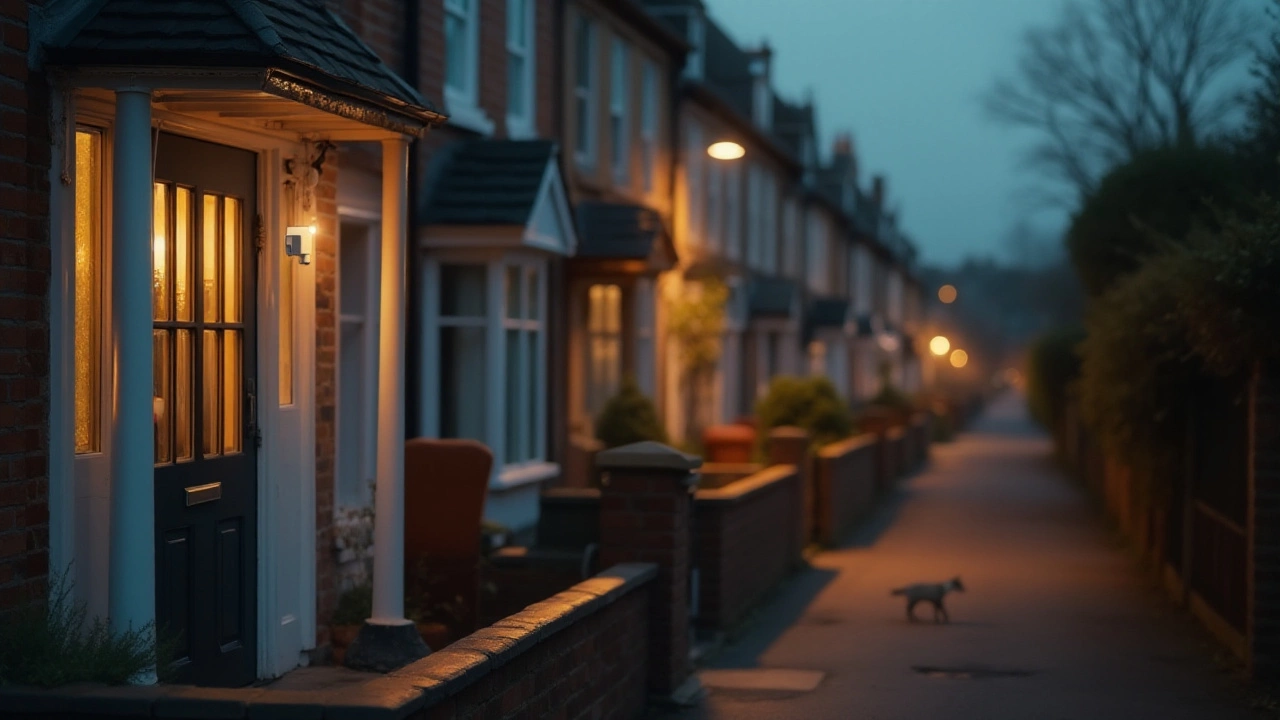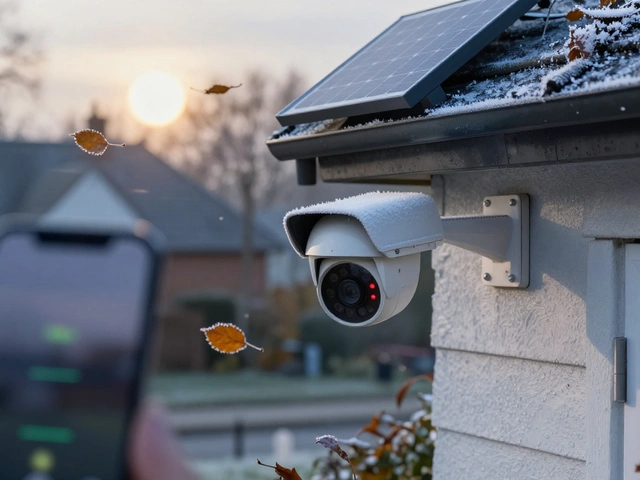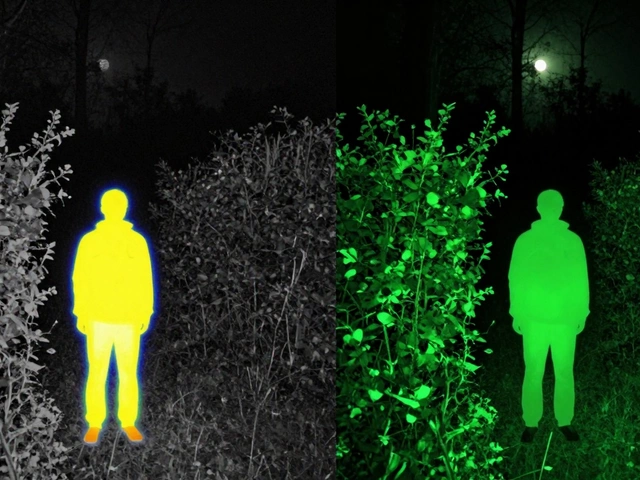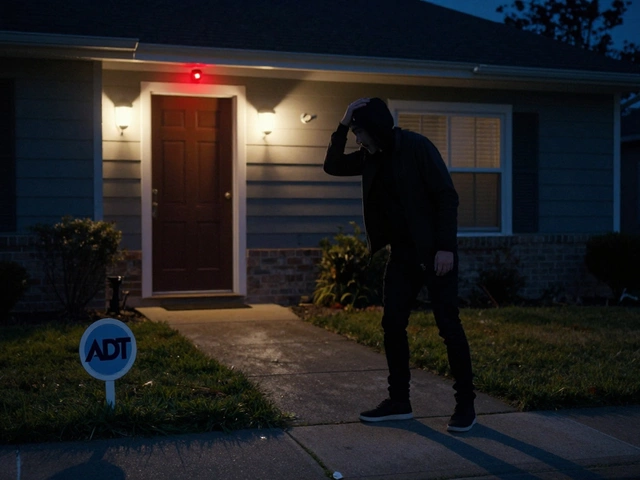In today's world, the importance of security is undeniable. For those looking to safeguard their homes or businesses, night vision cameras have become an essential tool. These cameras have revolutionized how we perceive safety by allowing us to monitor and protect our environments even in the absence of light.
Modern night vision cameras utilize advanced technologies like infrared illumination and thermal imaging to capture clear visuals regardless of the darkness. As we dive into the different types and features of these cameras, you'll discover how they work, what makes them unique, and how to choose the right one for your specific requirements.
- Understanding Night Vision Technology
- Types of Night Vision Cameras
- Key Features to Consider
- Benefits of Night Vision Cameras
- Tips for Choosing the Right Camera
Understanding Night Vision Technology
Night vision technology is a fascinating realm that has been integral to enhancing security and safety standards across the world. At its core, this technology is designed to produce a visible image in conditions where, under normal circumstances, it would be nearly impossible to see. Night vision primarily falls into two categories: image intensification and thermal imaging, each having its unique mechanism to illuminate the night.
Image Intensification
Image intensification is perhaps the most well-known as it’s commonly used in night vision goggles and cameras. It works by collecting tiny amounts of light, including the lower portion of the infrared light spectrum, which is invisible to the naked eye, and amplifying it to the point where a visible image is formed. This is typically achieved through a tube that converts photons into electrons. As these electrons hit a phosphor screen, they create a clear image that can be captured or displayed.Thermal Imaging
Thermal imaging, on the other hand, captures the upper portion of the infrared light spectrum. This part of the spectrum is emitted as heat by objects, with living beings emitting more than their cooler surroundings. A thermal imaging camera is equipped with a sensor that detects temperature differences. These differences are then translated into visual images, which don’t necessarily rely on visible light but rather on the heat an object emits. This makes thermal imaging a powerful tool for complete darkness, fog, smoke, and various environmental conditions.A critical factor to consider with night vision cameras is the effective distance, which can vary significantly depending on the model and technology. Most commercial night vision cameras using infrared LEDs can illuminate distances ranging from 30 to 50 feet. However, professional-grade models might reach up to 300 feet. This distance and clarity are crucial when planning the layout of your surveillance system. Understanding the camera's range allows you to optimally place them for the best coverage.
The history of night vision technology is equally captivating, developed initially for military use during World War II and Vietnam. Since then, it’s come a long way, entering the commercial domain with cameras integrated into daily security applications. Its evolution has paved the way for significant advancements in home and business security, and as Nobel Laureate Manfred Eigen aptly stated,
"Technology’s greatest promise is in enabling us to be more secure in the environments we deem our havens."This is particularly true as modern-day cameras incorporate real-time data processing, artificial intelligence, and smart integration with home networks.
Another groundbreaking element in these cameras is the use of infrared technology, which allows discrete monitoring—even in complete darkness. These advancements have also impacted battery technology in cameras, ensuring they remain efficient while supporting extended use, especially in remote locations where constant power isn't available.
Factors Impacting Night Vision Performance
Several factors can influence the night vision camera's performance. These include the level and uniformity of available ambient light, the camera's sensor quality, and lens characteristics, which all contribute significantly to the effectiveness of the night vision. Users often overlook the IR cut filter, a component that switches night/day modes, ensuring clear images regardless of the time of day.When selecting the right camera for your needs, it’s essential to find the balance between the technological specifications and practical requirements. In a few cases, focusing on these specifics might seem overwhelming, but the insight gained from understanding night vision technology is invaluable in making an informed decision.
Types of Night Vision Cameras
Night vision cameras have become an integral part of modern security systems, thanks to their ability to see in the dark. When navigating this realm, you will encounter several types that each offer unique benefits. One of the most common varieties is the infrared camera. These cameras boast infrared LED lights that create a field of view readable by the camera's sensor, even in total darkness. Infrared cameras are widely used in both residential and commercial setups, appreciated for their ability to capture black and white images with dependable clarity at night.
Another intriguing type is the thermal camera. Unlike infrared cameras that rely on light, thermal cameras register heat signatures, representing them visually. This technology allows for identifying living beings or operational machinery without needing light. It’s been famously employed in various sectors, including industrial, military, and wildlife observation. While these cameras can be pricier, many experts tout their efficiency.
According to a recent Security Technology Review, "Thermal cameras offer unparalleled vision capabilities without giving away illumination sources—ideal for sensitive operations."
Digital Night Vision Cameras
In more recent years, another type has gained traction: the digital night vision camera. These models differ by amplifying available light digitally, using sophisticated algorithms to enhance image quality under low-light settings. They stand out for their ability to present color images, offering a situational edge over older analog systems. Enthusiasts rave about their compact design and versatility, making them a great choice for dynamic environments.
A growing favorite among homeowners is the wireless night vision camera. These devices combine the capabilities of infrared technology with the freedom from cumbersome wires, employing Wi-Fi connections to transmit footage directly to your smartphone or computer. Not only practical, they also sport sleek designs that blend seamlessly into any setting.
For those with a penchant for tinkering or bespoke projects, DIY night vision kits offer a hands-on experience. These kits allow users to modify existing camera setups with night vision capabilities, providing flexibility and the joy of crafting personalized security solutions. Whether you're a technophile or a beginner dipping your toes into security, these kits offer a rewarding way to engage with this exciting technology.
When choosing the right type of night vision camera, it’s crucial to consider your specific needs. Whether it’s the robust build of thermal cameras for industrial uses or the user-friendly interface of wi-fi enabled systems for home security, understanding each type's strengths is key to making an informed decision. Delving into product reviews, detailed specifications, and trial demonstrations can also play a pivotal role in selecting the best option for your unique situation.
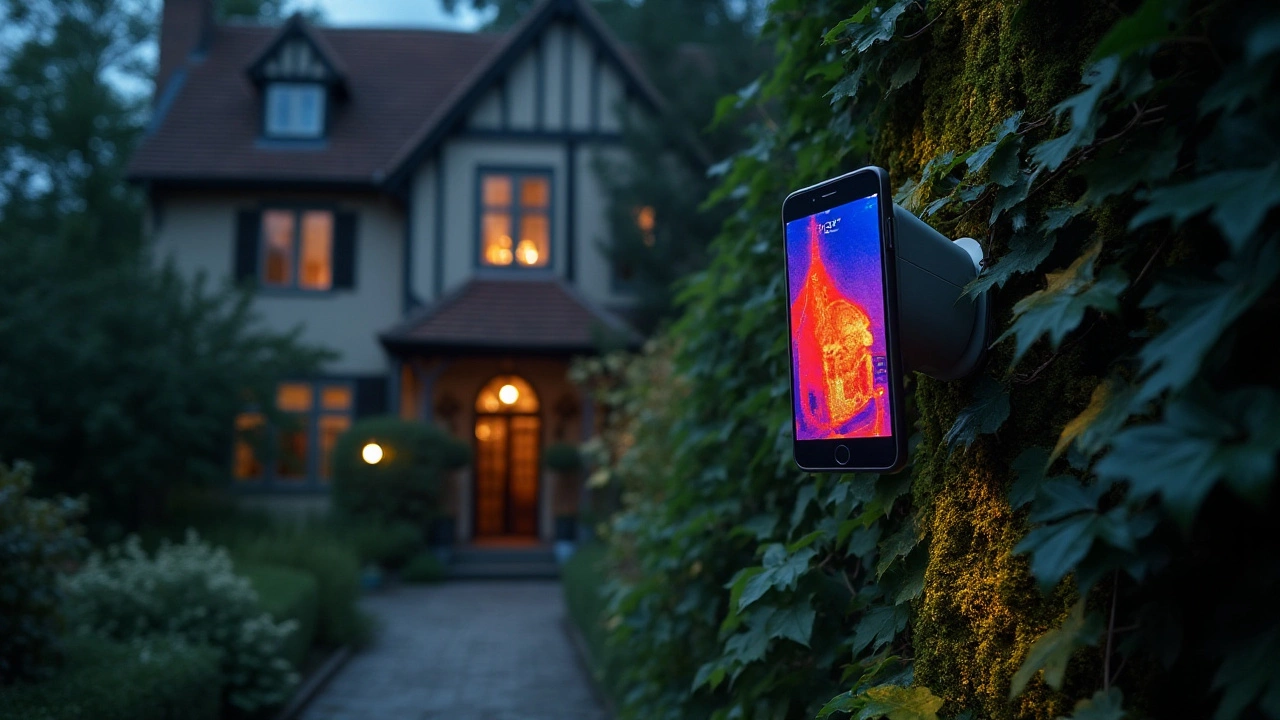
Key Features to Consider
When exploring the realm of night vision cameras, there are several crucial features that should factor into your decision-making process. These features can significantly impact the effectiveness and usability of your security system. One of the most vital elements is image quality. High-definition resolution ensures that critical details are captured, enabling better identification of any potential intruders or incidents. Look for cameras that offer at least 1080p resolution for clear and precise footage. Many advanced models now offer 4K resolution, which takes clarity to a whole new level.
Another key feature to look at is the type of night vision technology used. Most night vision cameras rely on infrared (IR) illumination to function in low-light conditions. IR cameras emit infrared light, which is invisible to the human eye but can be captured by the camera’s sensor. On the other hand, thermal cameras detect heat emitted by objects and don't require any light source, allowing them to operate in complete darkness. Each technology has its pros and cons, so consider your specific needs when making a choice.
Intriguingly, motion detection has become a staple feature in modern security cameras, drastically enhancing their efficiency. Some models offer adjustable sensitivity to avoid false alarms triggered by pets or foliage swaying in the wind. Advanced motion detection should also trigger notifications to your phone, keeping you informed in real-time. Together with motion detection, you might want to look into cameras that offer wide-angle lenses or rotational capabilities to cover a larger area. A carefully positioned wide-angle camera can reduce the number of cameras needed to cover your property.
According to a study by SafeWise, "Homes without any form of security system are 300% more likely to be broken into, proving the effectiveness of a well-placed camera that deters potential burglars and captures evidence when needed."
Connectivity and smart home integration are also essential factors to consider. Most new-age cameras can connect to your home Wi-Fi network, enabling you to access live footage from anywhere via a smartphone app. This feature is especially useful for frequent travelers who still want to keep an eye on their property. If you are already using smart home devices, ensure that your chosen camera can integrate seamlessly with your existing system, whether it's Google Assistant, Alexa, or Apple HomeKit.
Lastly, consider the storage options offered by your chosen security camera. While some cameras save footage to an SD card, others offer cloud storage solutions, providing a more secure backup. Assess the storage capacity and retention policies, especially if you anticipate needing access to footage over extended periods. Ultimately, deciding between cloud storage and local storage may boil down to personal preference, but it’s worth examining the benefits and costs associated with each.
Benefits of Night Vision Cameras
Incorporating night vision cameras into your security system brings a slew of advantages that go beyond traditional surveillance methods. One of the primary benefits is their ability to provide clear and detailed images in low-light conditions, making it nearly impossible for unwanted activities to go unnoticed. Unlike standard cameras that struggle in the dark, night vision cameras leverage infrared technology to illuminate scenes without alerting intruders. This means they provide unyielding vigilance around the clock, offering peace of mind whether you're fast asleep or halfway around the world.
Enhanced security isn’t the only reason to invest in these devices. They are designed to cover a wide range of environments, from dimly lit corridors to expansive backyards. The ability to adjust and handle various lighting conditions not only ensures you never miss a moment but also shields your property from potential threats. Modern surveillance systems equipped with night vision can even detect motion, which triggers alerts to your smartphone, keeping you informed and in control wherever you are. It's not merely about the visuals; it's about creating a proactive security ecosystem.
Another often-overlooked advantage is their deterrent effect. The mere presence of visible security cameras can dissuade potential criminals from attempting to breach your space. When these cameras are known to function effectively at night, their deterrent power increases substantially. Intruders often thrive in darkness, but knowing a property or facility is equipped with cutting-edge night vision capabilities serves as a powerful discouragement. As quoted by a former law enforcement officer, "The best security measure is one that prevents a crime from happening in the first place."
On the technological front, advancements in night vision cameras have introduced features that were once thought of as futuristic. With integrations into smart home systems, these cameras can now be accessed through apps, allowing you to view live or recorded footage from anywhere at any time. This connectivity is not just about convenience but about delivering a comprehensive security solution that keeps pace with your lifestyle, making it adaptable and user-friendly.
Moreover, as our world becomes increasingly interconnected, the reliability and functionality of these cameras play a critical role in personal and public safety. They not only watch over homes but also serve important purposes in commercial establishments, urban surveillance, and even wildlife observation. The versatility of application ensures that as technology evolves, night vision cameras remain a pivotal component in the landscape of modern security solutions.
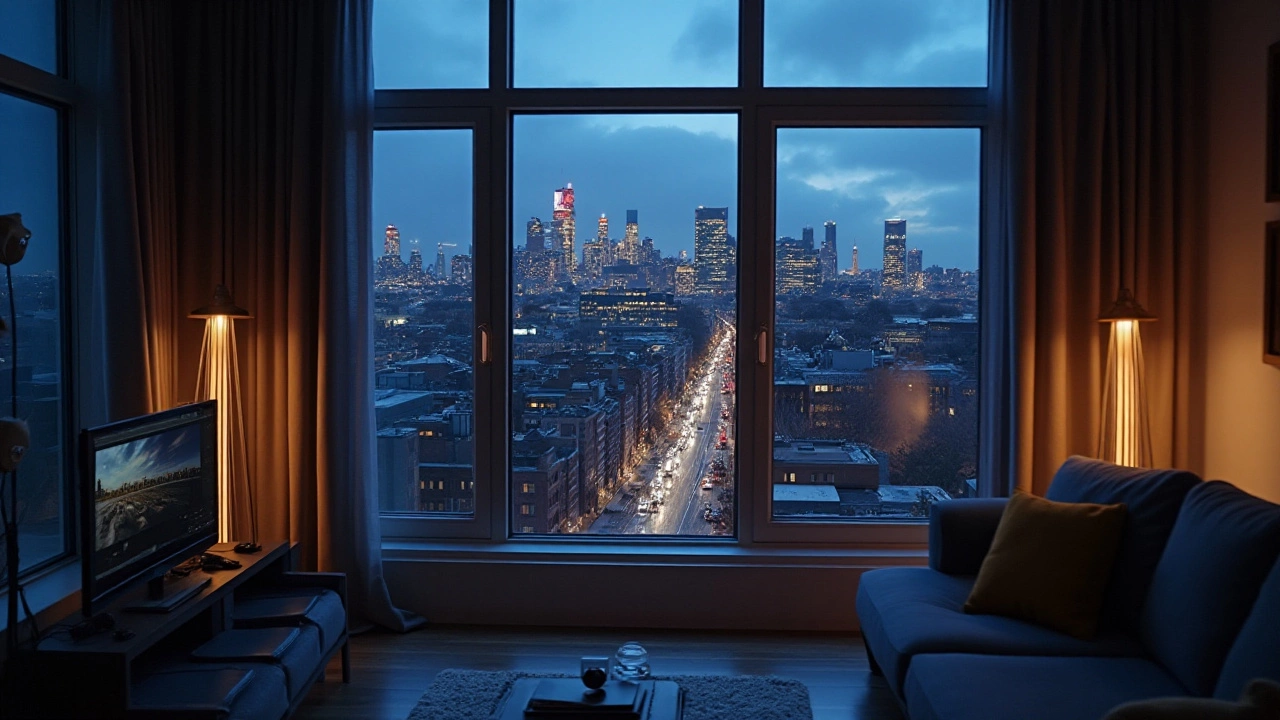
Tips for Choosing the Right Camera
Choosing the perfect night vision camera can feel a bit overwhelming, given the myriad options available. The first step is to clearly define what you need from such a camera. Are you aiming to enhance home security, monitor outdoor premises, or keep an eye on wildlife? Understanding your primary purpose will guide you toward the right type. Traditionally, night vision cameras use infrared technology, which allows for detailed imagery in darkness. Key factors such as image quality, range, durability, and ease of installation need to be considered.
The importance of image quality cannot be understated. Often, the stark difference between cameras lies in their resolution capability. Opt for cameras offering at least 1080p resolution to ensure clarity. Another critical factor is the range or distance the camera can capture clear images. This largely depends on the infrared LEDs used in construction. Look for cameras that specify both the visible range and the IR range. Equally vital is the field of view. A wider angle lens allows for a larger surveillance area, which can be crucial for broader spaces.
Surveillance in extreme environments demands night vision cameras built to withstand the elements. Consider the IP (Ingress Protection) rating when purchasing an outdoor camera. A camera rated at least IP65 can withstand dust and water sprays. Cameras for indoor use may not require the same level of protection but consider their durability, especially if they need to be discreetly mounted or hidden from view. As a tech-savvy parent myself, ease of installation holds significant weight. A system that you can set up without professional help not only saves installation costs but offers convenience as well.
For those embracing smart home systems, integration is an alley to be explored. Some cameras offer enhanced connectivity features, allowing them to pair with smartphones or home assistants. This enables real-time notifications and, in some cases, remote control. “Security is like riding a bicycle in the night; you might not see everything in the dark, but your security camera will,” as Dean Shives of Home Guard Solutions often says. A keen eye on the power source is another essential aspect. While some cameras come with battery packs for flexibility, others require a fixed power supply.
For the budget-conscious, exploring price versus features is a balancing act. It’s good to establish a baseline requirement and compare multiple brands within that framework. It can be tempting to cut corners on budget but remember that the cost frequently reflects the camera's build and features. As a compelling note, the home security market indicates households save between 20-30% in insurance premiums by integrating security systems. Therefore, investing wisely in a night vision camera could see returns beyond mere peace of mind.

